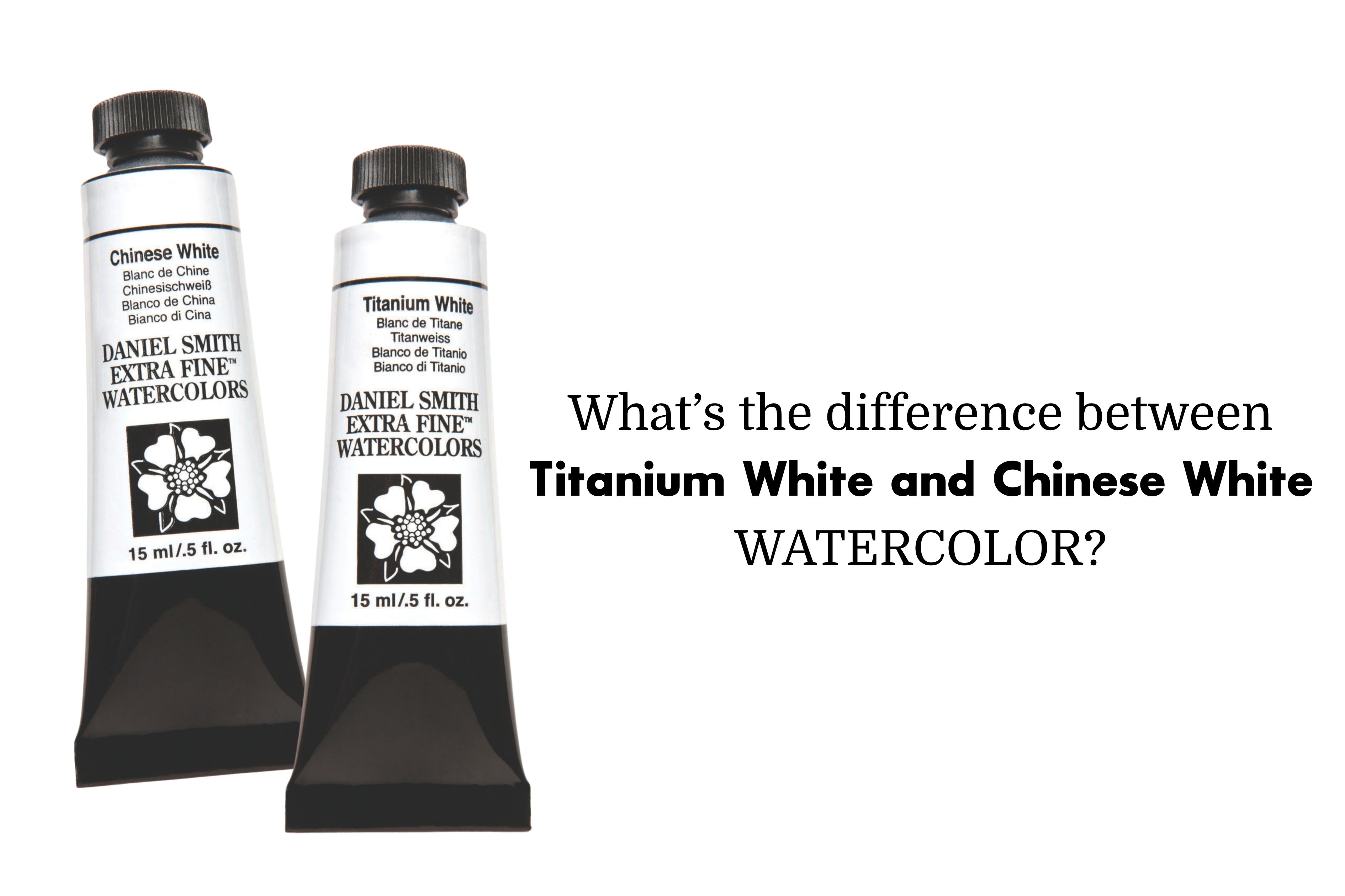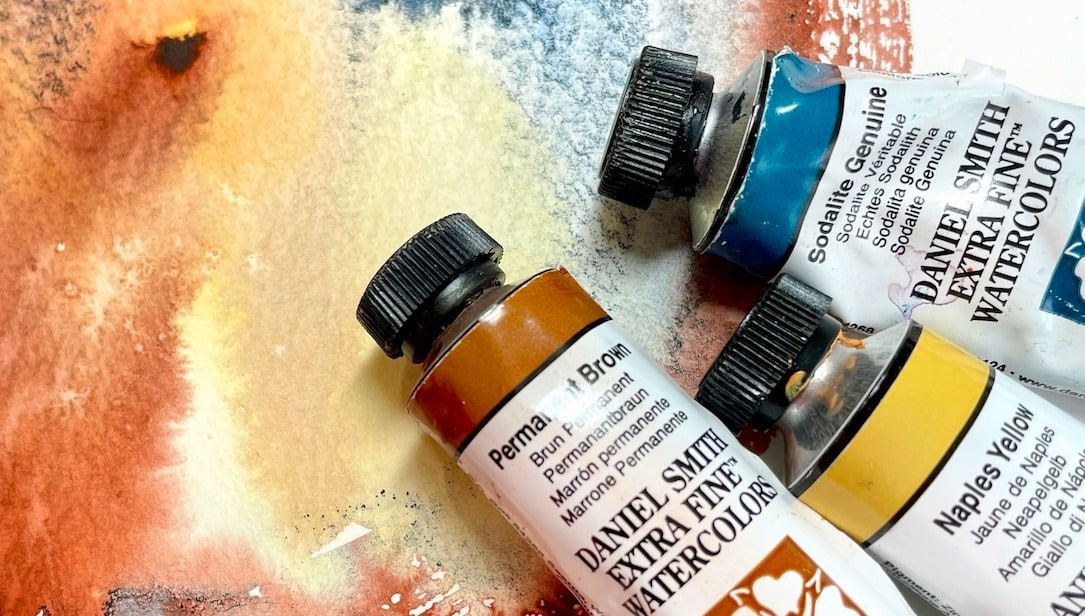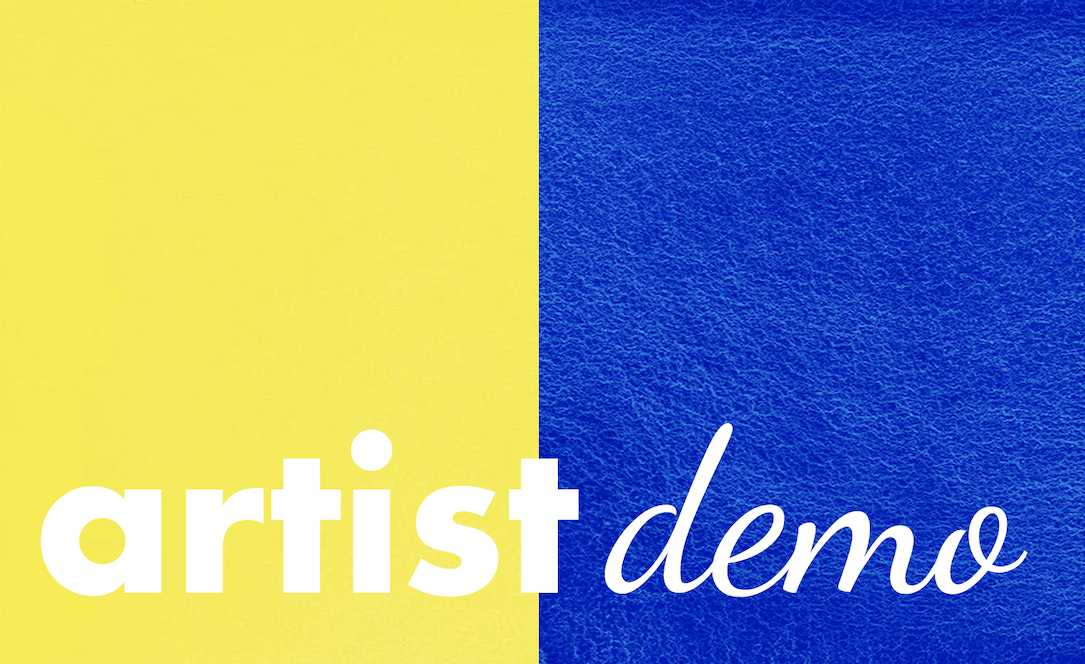I paint with watercolor because I love it’s organic nature and that the pigments and water can, on their own, do beautiful and unexpected things. I love that watercolor is a medium which celebrates the power of simplicity. It gives me the freedom to paint loosely and to be bold and carefree. But at the same time, because things cannot be changed or covered up, every brush stroke requires intention and purpose and the results can be magical. I paint with DANIEL SMITH Watercolors, primarily their Primatek and Quinacridone range.
The pure, bright Quinacridone colors are a perfect contrast to the granulating Primatek colors. Used together, the paintings have texture and really shine. I find it exciting to be able to paint with mineral pigments sourced directly from the earth and from across the world.

I start with a pencil sketch of the leopard’s eyes and head, using a soft 6B pencil. Some pencil markings are visible in my final artworks, and I like this because it feels like my fingerprints. Sketching gives me the time to focus on the light and how it is falling on my subject. This is when I really visualize the mood of the expression and the emotion I want to portray in the final artwork. I sketch my point of focus and keep all the other lines very loose.

Next I soak my paper with water using a shower hose. I want the paper to be completely wet and flat. I start by painting the eyes. This is my way of connecting with the subject I am portraying. I want to capture their spirit and so much of the mood and expression is in the eyes. I use a combination of brushes including a size 6 and 8.
I use Indigo, Quinacridone Gold and Shadow Violet in the eyes. I then drip in the background and shadow colors, but I make sure to leave the highlights white. I like lots of white paper surrounding my subject so that the viewer’s eye has space to roam. In the initial stages, my technique is about drawing and pouring rather than painting. And I say pouring rather than dripping, because I work on large size paper.
I mix the colors in my first wash with water in little pouring cups. I include Primatek granulating colors because of the texture they create. For beautiful washes, it’s essential to have the right amount of pigment and water in the brush, and to drop it onto the paper without using brushstrokes to avoid the wash from becoming dull and flat. The watercolor can do magical things all on its own, so it’s important not to try and control it too much. I let the colors mix together on the paper.
In this wash, I have used Hematite Burnt Scarlet Genuine, Raw Umber and Shadow Violet. Given the patterns on a leopard, I have done a lot of random drops of paint with a large mop brush. I love painting with Shadow Violet and Hematite Burnt Scarlet Genuine because of the way the pigments separate. I often let them settle and then only use certain tones within the color. For example in this painting, I have used the teal blue from the Shadow Violet for the ears and front paw, to contrast the yellow in the eyes and the warm tones in the painting.

I continue to paint the patterns of the spots on the leopard’s body. My paintings are all very much about pattern play. I start with the spots under the chin and then work myself round to the right and top of her head. I don’t like too much order, but rather I play with the shapes and colors and encourage happy accidents, as I believe these give my paintings energy and personality.
I also add details into the highlight areas which were previously completely white. I start to deepen the shadows under the chin and above the head. I use Shadow Violet because its transparency is excellent for glazing and final shadow details. I also use Indigo because its depth of color, from very black to a transparent blue, is beautiful. I add Hematite Burnt Scarlet Genuine as it makes the shadows shine.

The final touches to the painting include strengthening the front leg and also the eyes. To the eyes, I add Indigo and a touch of Quinacridone Gold to make them pop. The eyes are complete in two layers. I don’t like to fiddle too much because with watercolor, there is a real danger of overworking the painting. I always like to leave some white space in my paintings.
The biggest learning is knowing when to stop! I want my leopard to feel really powerful, so I make suggestive marks around her legs and front paw using Hematite Burnt Scarlet, to give the feeling that she is going to prowl off the page.







